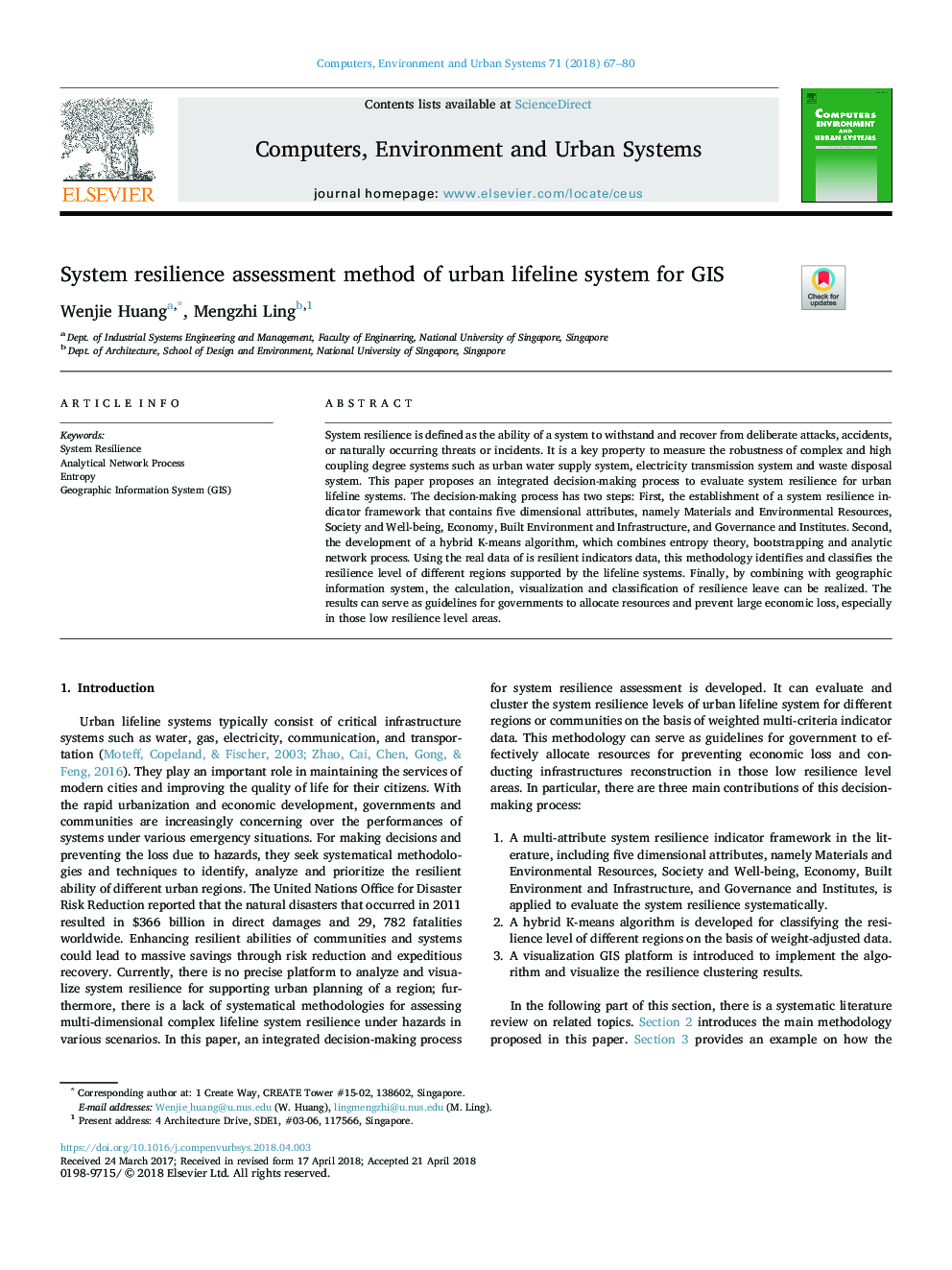| Article ID | Journal | Published Year | Pages | File Type |
|---|---|---|---|---|
| 6921818 | Computers, Environment and Urban Systems | 2018 | 14 Pages |
Abstract
System resilience is defined as the ability of a system to withstand and recover from deliberate attacks, accidents, or naturally occurring threats or incidents. It is a key property to measure the robustness of complex and high coupling degree systems such as urban water supply system, electricity transmission system and waste disposal system. This paper proposes an integrated decision-making process to evaluate system resilience for urban lifeline systems. The decision-making process has two steps: First, the establishment of a system resilience indicator framework that contains five dimensional attributes, namely Materials and Environmental Resources, Society and Well-being, Economy, Built Environment and Infrastructure, and Governance and Institutes. Second, the development of a hybrid K-means algorithm, which combines entropy theory, bootstrapping and analytic network process. Using the real data of is resilient indicators data, this methodology identifies and classifies the resilience level of different regions supported by the lifeline systems. Finally, by combining with geographic information system, the calculation, visualization and classification of resilience leave can be realized. The results can serve as guidelines for governments to allocate resources and prevent large economic loss, especially in those low resilience level areas.
Related Topics
Physical Sciences and Engineering
Computer Science
Computer Science Applications
Authors
Wenjie Huang, Mengzhi Ling,
